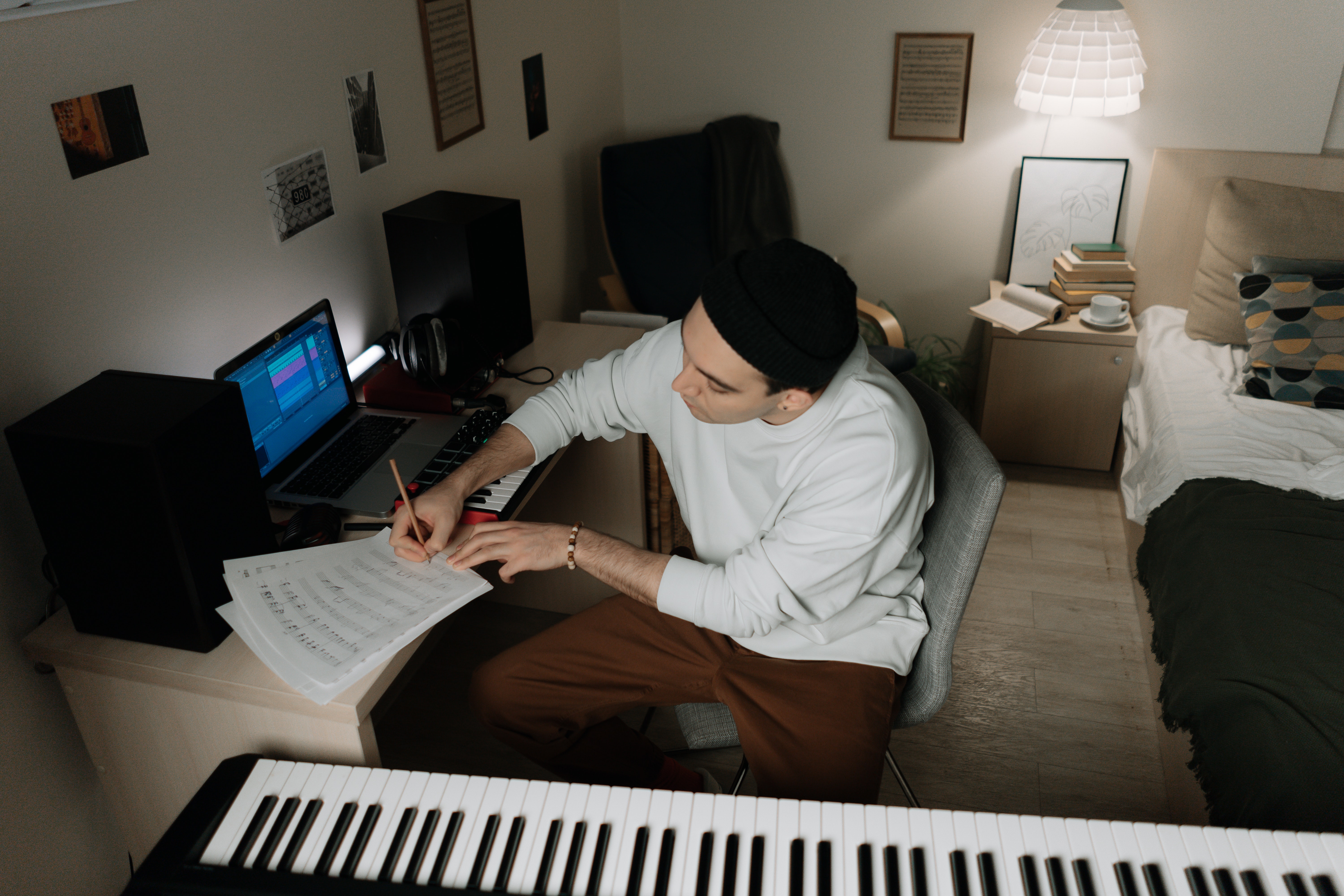We asked pianist and composer Carlos Gardels to share his creative experience to help readers who are thinking of composing their own pieces. Don’t be nervous: dive in!
As a pianist by training, and someone who has come to composition only much later, one thing has become clear: Nobody composes the same way. By contrast, pianists tend to work in similar ways: we start by reading the score, writing in fingerings, forming ideas about the piece – followed by endless slow practice, using the metronome, and finally up to tempo, then resulting in some form of performance.
But composers’ processes are much more varied: some use computer software, some use mathematical formulas and some plan out the structure with a pencil on a graph before writing a single note. Look at some of the past greats: Schubert and Mozart were ‘desk’ composers, writing on a table while hearing inwardly, whereas Chopin and Schumann were not able to compose without being seated at the piano. There is no ‘right’ way.
However, there are some general struggles we tend to face when composing – many of which I’ve had my share of – so I will highlight several below as well as offer a few solutions that have worked for me.
1. How to get started
I like John Corigliano’s suggestion to just ‘let your hand guide you’. Don’t think too much. Try something out. If you don’t like it, ask ‘What if?’: ‘What if I went here instead of here? What if I varied the rhythm more? What if I made an expressive upward leap instead of just another step?’ Ultimately, I believe an underrated part of creativity is simply having the patience to continually flush out what we don’t like and keep experimenting until we find what we do.
It may be helpful to change your mindset from ‘creating’ music to ‘discovering’ music – that the sultry melodies you’re about to write already exist, and it’s just your job to find them.
2. Remember that less is MORE
So often in our pieces we are overly preoccupied about trying to come up with new material, when often the wiser choice is to figure out how to develop what we already have.
The ways to do this are countless, and here are just a few: experiment with different accompanimental figures, different ornamentation, different harmonies under the same melody, switching octaves, colouring a melody upon a repeated hearing with added intervals below it, etc. (These are also great exercises for us anyway to develop our musical vocabulary even if we don’t wish to formally compose, and great for teachers to develop musicianship in their students.)

"It may be helpful to change your mindset from ‘creating’ music to ‘discovering’ music – that the sultry melodies you’re about to write already exist, and it’s just your job to find them."
3. Repeat a melody, but the second (or third) time – vary it towards the end
Just by changing a few notes in the melody (or changing a harmony accompanying the melody), you can give the musical impression of returning to a fork in the road and having a chance to experience the Road Not Taken. Also, don’t neglect the value of sheer repetition!
Nadia Boulanger said, ‘There is no such thing as repetition in music’ – an astute observation. Whatever we hear in music is always in relation to what came before and what comes after – at times making the experience of the actual notes’ subsidiary to their relation to the whole. Look at such beloved pieces as Satie’s Gnossiennes and Chopin’s Scherzos… 80 percent is repetition, and yet you hardly notice!
When I look back at my immature compositions, I feel they were too excited to explore many different directions one after another, without fully developing what was in place first. Enticing listeners with the right balance of familiarity and novelty is a challenge that is a delicate one, but very effective if done well.
4. Pick some of your favourite poetry, and try to write a song for voice and piano to it
When I was in college as a piano performance major (and as such had no incentive or deadlines to compose), I would start composing but never know how to finish, never know where ‘to go’. Then one day I decided to write a song for a soprano friend, based on a poem by Maya Angelou. Somehow, having a text served as a kind of musical blueprint for my melodies and harmonies to take shape, and they carried me – for the first time – to the end of a piece. At its completion I eventually decided to compress it as a single piano piece rather than a song – and that was the first piece I ever finished!
About the author:
Carlos Gardels is a pianist, teacher, composer, and professor of Music at Citrus College in California. His latest publication, Three Fantasies, is published by Theodore Presser Music.










